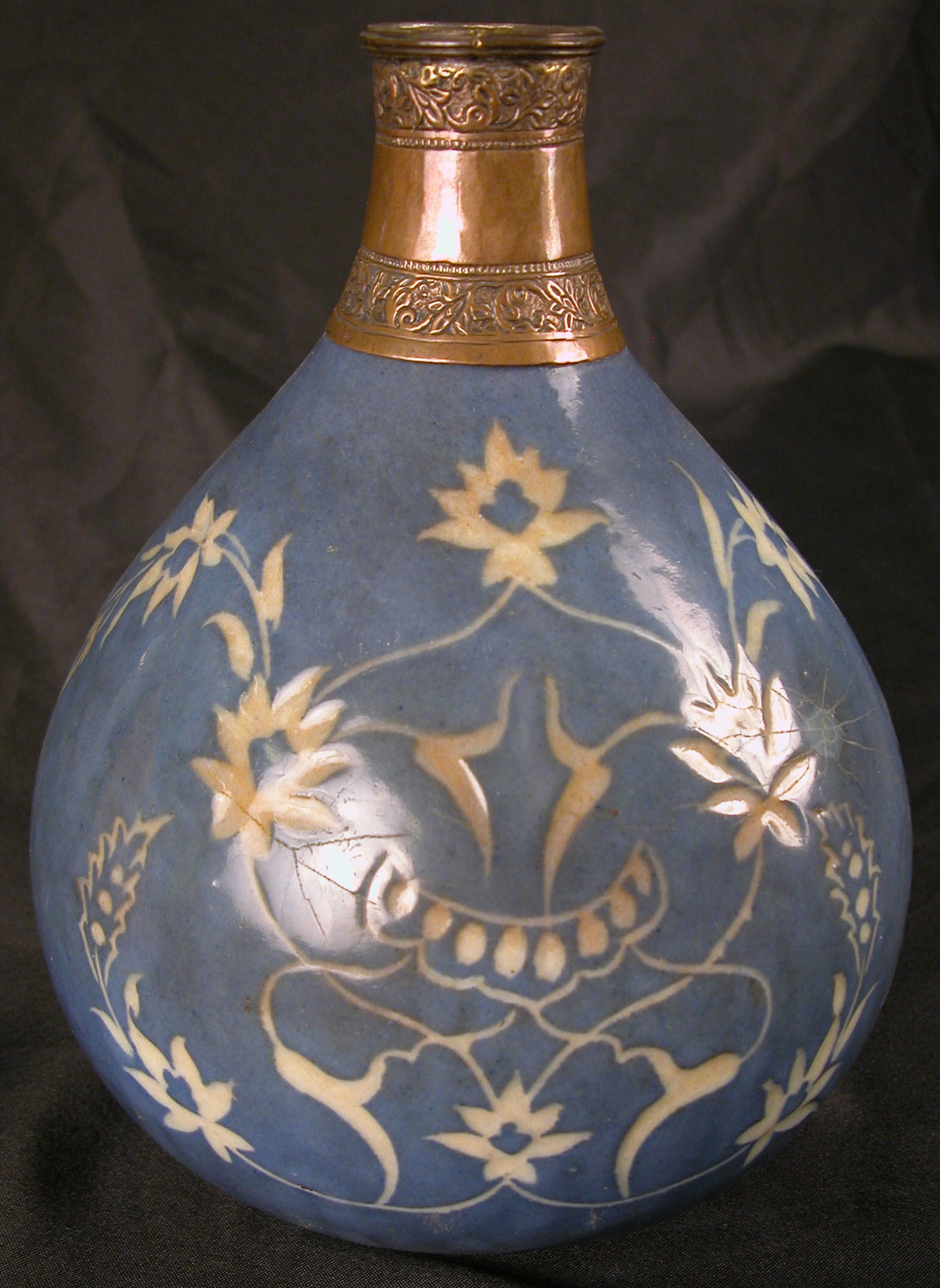Water Pipe Base
Not on view
The technique of frit-carving was popular in the 12th century and experienced a revival in the 17th century. This involved covering the entire vessel in a thick layer of frit (in this case, blue), carving through to the white composite body, and finally covering the ware in a transparent glaze.
The blue frit on this water pipe base (qalian), is reminiscent of the color on a type made in the kilns of Iznik, Ottoman Turkey. The serrated saz-shaped leaf forms also bear reference to Ottoman forms, while the lotus-flower leaves are traditionally Chinese. The metal attachments to this kalian are later additions, added in order to protect the vulnerable projecting segments.
This image cannot be enlarged, viewed at full screen, or downloaded.
This artwork is meant to be viewed from right to left. Scroll left to view more.




